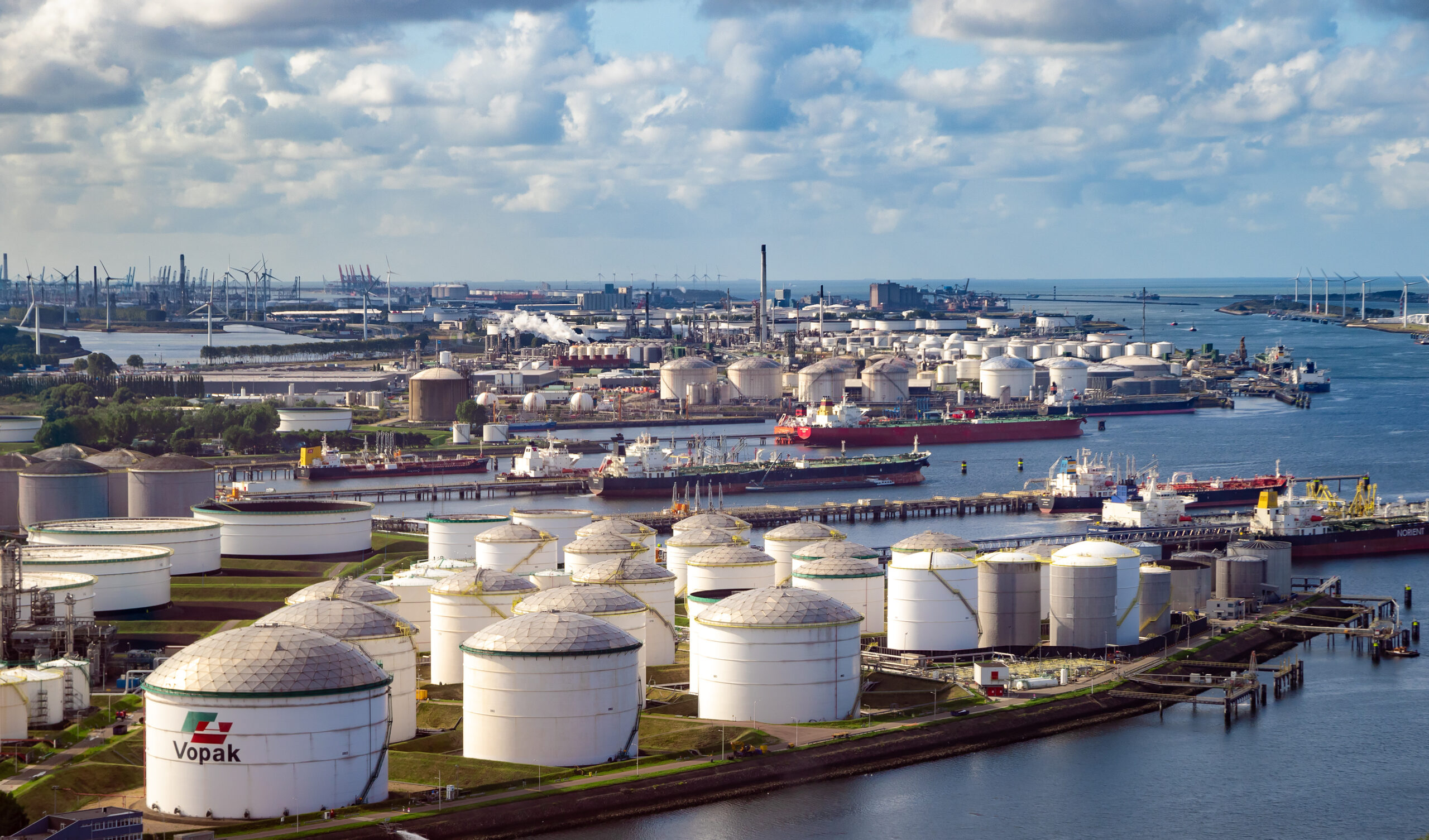Will new climate laws markedly reduce EU methane emissions?
The landmark legislation will require companies to measure and quantify both their source- and site-level EU methane emissions for the first time.

The media glare was firmly fixed on the United Arab Emirates last December and with good reason. For it was in Dubai, which was hosting COP28, that 198 nations made an unprecedented pledge to “transition away from fossil fuels in energy systems.” But as energy ministers left for Dubai, some 3,000 miles away in wintry Brussels, an equally momentous agreement was quietly being advanced. Curiously, however, there was very little fanfare surrounding the first ever law to limit EU methane emissions. With the U.N. Climate Change Conference taking centre-stage, it largely went under the radar.
That could be because the agreement still needs to be ratified. However, according to the Environmental Defense Fund Europe (EDF Europe), a non-profit environmental advocacy group, it won’t be long before EU methane emission laws are formally adopted.
EDF Europe expects the deal to be rubber stamped by the European Parliament “in February” and the European Council to vote on it “in March/April.” Having passed these two legislative hurdles, EDF Europe forecasts that the deal would most likely come into force “in the second quarter of 2024.”
Even though the legislation is not yet fully over the line, for Flavia Sollazzo, a senior director of EU Energy Transition at EDF Europe, “the significance of the EU agreeing this landmark methane regulation deal right before COP28 cannot be overstated.”
She explains, “What the EU has done is put methane mitigation front and centre on the global agenda. It has leveraged the fact that it’s the world’s biggest importer of natural gas. And, in mandating that producers, exporting to the bloc, strengthen standards, it’s shown that climate responsibility extends beyond borders.”
It has also put current methane detection systems in the spotlight. According to Professor Aoife Foley, the Chair in Net Zero Infrastructure at the University of Manchester, the legislation’s focus on reducing methane emissions and implementing stringent monitoring requirements “is likely to drive innovation in methane detection and measurement technologies.”
She says, “While the agreement itself may not explicitly mandate the use of specific technologies, it creates a regulatory environment that encourages the adoption of advanced and more accurate monitoring methods.”
That’s because for the first time the legislation will require companies to measure and quantify both their source- and site-level methane emissions.
Operators, says Sollazzo, will also be required “to submit a yearly report to the competent authorities (government agencies) containing the results of measurements required by the Measurements, Reporting and Verification (MRV) framework outlined in the regulation.”
Oil and gas operators, in both the upstream and downstream segments, will also have to conduct Leak Detection and Repair (LDAR) surveys every six months in production facilities, and every four months in compressor stations, underground storage facilities and LNG terminals.
Says Sollazzo, “We are hopeful that this should ensure that operators carry out thoroughly the requirements of the regulation. Moreover, fixing leaks is often beneficial for them in the long term, as recovered gas is gas that can be sent to market.”
Technology efficiency concerns
Sollazzo is nonetheless concerned that conventional sensor technology is not the most efficient at identifying methane. She says that EU-based operators “should use the newest technologies with appropriately low-detection thresholds.”
According to the Environmental Defense Fund Europe, there are no “standards and technical prescriptions” in the final draft, as to which advanced technologies should be best used for LDAR or MRV purposes. However, it says that the European Commission will come up with technical standards for measurement technologies in the next few years.
So what are the technologies that can make a difference? Professor Foley says, “The use of next-generation technologies, such as laser-based sensors, Fourier-transform infrared (FTIR) spectroscopy, and Lidar remote sensing, offers the potential for more precise and efficient methane detection compared to conventional Optical Gas Imaging (OGI) sensors. These advanced technologies provide real-time and remote monitoring capabilities, enhancing the industry’s ability to identify and address methane leaks promptly.”
Professor Foley believes that as the legislation comes into force and companies strive to comply with the new requirements, “there is a likelihood that a shift towards adopting these next-generation technologies will occur.”
It is likely that these technologies will be adopted by government agencies too. Why? Well, in the case of both MRV and LDAR, not only will companies be required to measure and quantify their source-level methane emissions, but Sollazzo says that it will be a mandatory requirement for reports to be “checked by independent third-party verifiers.”
But how much scrutiny will be employed? Sollazzo thinks that surveillance will be high. “The independent verifiers will check the methods employed are in line with the MRV framework. They also will have the power to carry out announced and unannounced site checks before the final paperwork is officially submitted to the competent authorities. To ensure governance, transparency and accountability, all reports are made available to the European Commission and the public.”
As a belt and braces measure, to ensure that the regulation is correctly followed, Sollazzo notes that “competent authorities” are authorised “to conduct routine inspections, site checks and have the power to examine documentation.” She explains, “In the event of a breach of regulation, a remedial plan will be issued by the Competent Authority…, while the appointed government agency can also enforce penalties to operators in case of non-compliance.”
However, with individual member states solely responsible for transposing, implementing and applying their own enforcement procedures, Sollazzo is worried “that some companies seem to be weighing fines against the cost of doing business.”
She explains, “This isn’t the deterrent it’s meant to be. As a counterbalance, member states will need to design penalties that are meaningful enough to get everyone’s attention. The fines should make the cost of non-compliance higher than investing in compliance. Countries must also make sure that there is a robust system to catch and penalise offenders.”
But even if enforcement measures within the 27 EU nations are deemed to be effective, what is to stop operators moving their operations to neighbouring countries like the, UK, who aren’t members of the European Union?
Professor Foley does not see a scenario like this unfolding. She explains, “Although the UK is no longer a member of the EU, the impact of the agreement on methane emissions can still be significant for the UK. The EU and the UK often maintain close collaboration on environmental regulations and climate goals. Moreover, methane emissions are a global concern, and international efforts to address them, such as those outlined in this agreement, are likely to influence and shape broader environmental policies.”
Sollazzo agrees. She expects, that in the main, the new regulations “will send a strong signal to service providers both inside and outside of the EU.”
But it begs an important question. Are next-generation technologies, that are not mentioned in the legislation, the key to its effectiveness, or is it the regulation itself that is the true catalyst for technological change?
In Sollazzo’s view, the legislation has sparked a revolution in methane monitoring innovation”. She notes, “Over the past few years we have already seen a revolution in terms of methane monitoring innovation. It is a trend that should continue due to the requirements set out in EU legislation.”
Professor Foley opines, “The pressure to meet stringent EU standards and the increasing emphasis on sustainability and environmental responsibility is expected to drive oil and gas companies to explore and invest in innovative monitoring solutions.”
Whatever the truth, operators will “no longer be able to hide behind excuses anymore,” concludes Sollazzo.
That is perhaps the most powerful aspect of the legislation and of the technology that underpins it.



